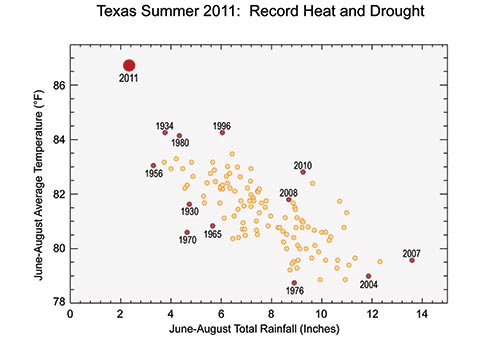Drought
Higher temperatures lead to increased rates of evaporation, including more loss of moisture through plant leaves. Even in areas where precipitation does not decrease, these increases in surface evaporation and loss of water from plants lead to more rapid drying of soils if the effects of higher temperatures are not offset by other changes (such as reduced wind speed or increased humidity). As the soil dries out, a larger proportion of the incoming heat from the sun goes into heating the soil and adjacent air rather than evaporating its moisture, resulting in hotter summers under drier climatic conditions.
An example of a recent drought occurred in 2011, when many locations in Texas and Oklahoma experienced more than 100 days over 100°F. Both states set new records for the hottest summer since record-keeping began in 1895. Rates of water loss, due in part to evaporation, were double the long-term average. The heat and drought depleted water resources and contributed to more than $10 billion in direct losses to agriculture alone.

No comments:
Post a Comment